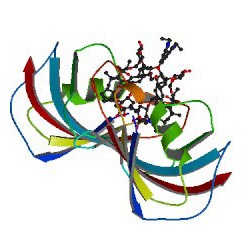Transcriptional activator-like effector nucleases (TALENs) have rapidly become a technique of choice for precision genome engineering. TALENs are custom-designed nucleases that consist of a modular DNA-binding domain fused to a monomeric, C-terminal FokI nuclease domain (1). TALENs work in pairs and are designed to recognize and bind to tandem-oriented sequences in genomic DNA, separated by a short spacer (15–30 bp). TALEN binding causes dimerization and activation of the FokI nuclease domains, which results in cleavage of the DNA within the spacer region. Small insertions or deletions (indels) are frequently introduced at this site, as the result of errors made during DNA repair by nonhomologous end-joining (NHEJ). These indels can be up to several hundred base pairs in length and result in frameshift mutations that lead to the production of truncated or nonfunctional proteins.
Successful use of TALENs for inducing targeted mutations has been reported in many conventional models, for example: mice, Xenopus and D. melanogaster. TALENs are also reported to be functional in a variety of other invertebrate arthropods, including mosquitos,silkworm and cricket. A recent publication (2) illustrates the use of TALEN technology for the genetic manipulation in P. dumerilii (marine ragworm).
To test whether the TALENs were able to recognize and cleave the specific target sequence, an in vitro cleavage assay (TNT assay) was performed, whereby TALEN expression plasmids were incubated with target DNA and nontarget DNA in a transcription translation reaction mixture. Reactions were assembled using 40μl of TNT® SP6 Quick-Coupled Transcription/Translation reaction master mix (Cat.# L2080, Promega), 1 μg of each TALEN plasmid, 225ng of specific target DNA, and 225 ng of nontarget DNA (egfp-coding sequence). Negative-control reactions contained only left TALEN plasmid DNA. Reactions were incubated for 3 hours at 30°C. DNA was purified by phenol/chloroform extraction. Extracted DNA was treated with RNaseA and analyzed on 1.5% TAE agarose gels.
TALEN activity was assessed by the ratio of cut vs. uncut target DNA present following incubation. Irrespective of the assembly method, all TALEN pairs tested were found to cleave the specific target DNA with efficiencies ranging from 40 to 97%. Nontarget DNA was not cleaved, consistent with the observation that TALEN activity is specific for the intended target.
Based on in vitro findings, experiments proceeded to validate the activity of TALENs architecture in vivo.
Literature Cited
- Christian, M.T. et al. (2010) Targeting DNA double stranded breaks with TAL effector nucleases. Genetics 186, 757–61.
- Bannister, S et al. (2014) TALENs mediate efficient and heritable mutation of endogenous genes in the marine annelid Platynereis dumerilii. Genetics 197, 77–89.


Thanks for sharing this great post, which is knowledgeable and helpful for us.
Glad that you found the post informative. Thanks for the feedback. Michele at Promega.
An elegantly designed experiment but please would it be possible to tell us the nature of the target(s)? Was it genomic DNA? A large PCR product? And was there a background level of cutting in negative controls from homodimers of left TALEN?